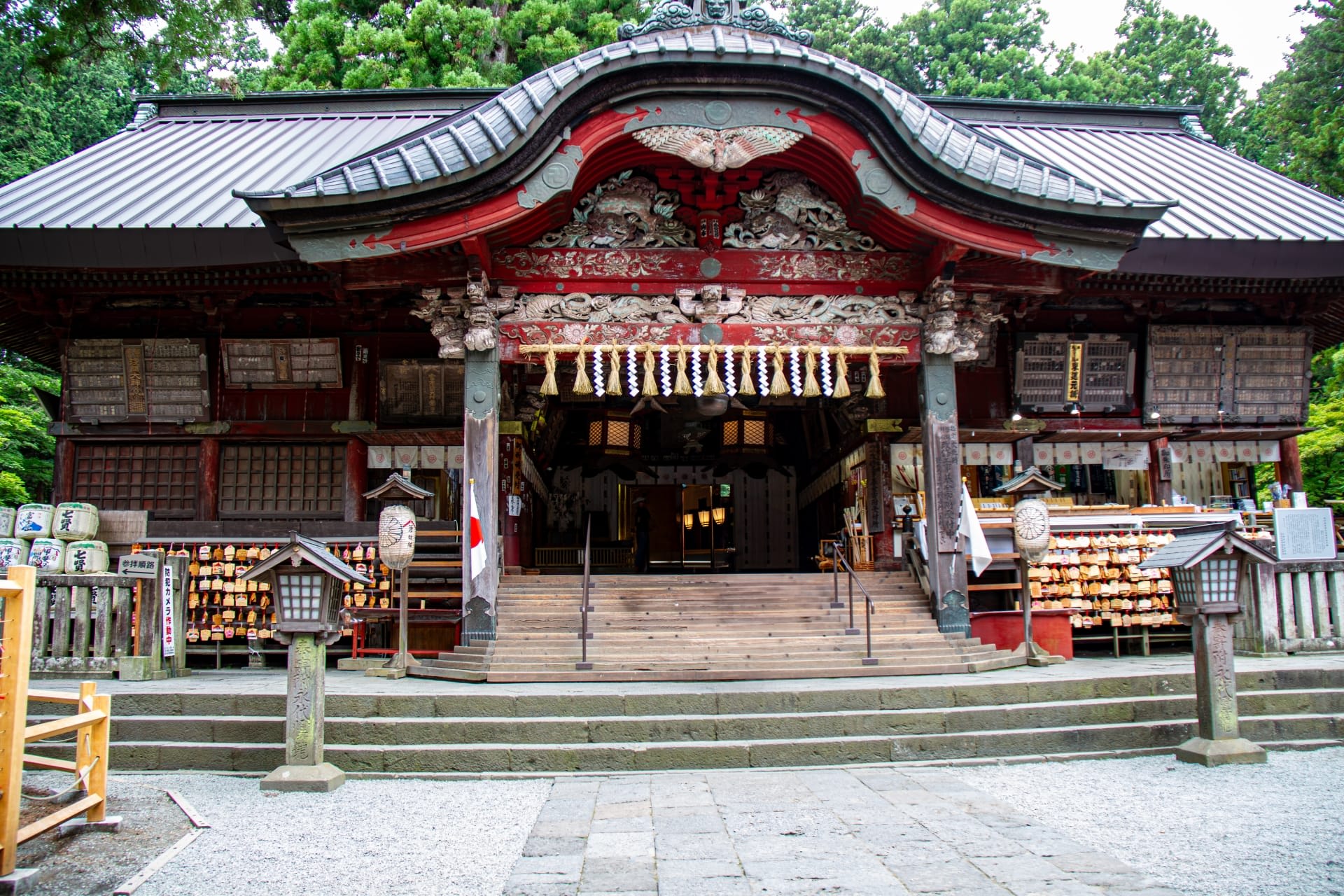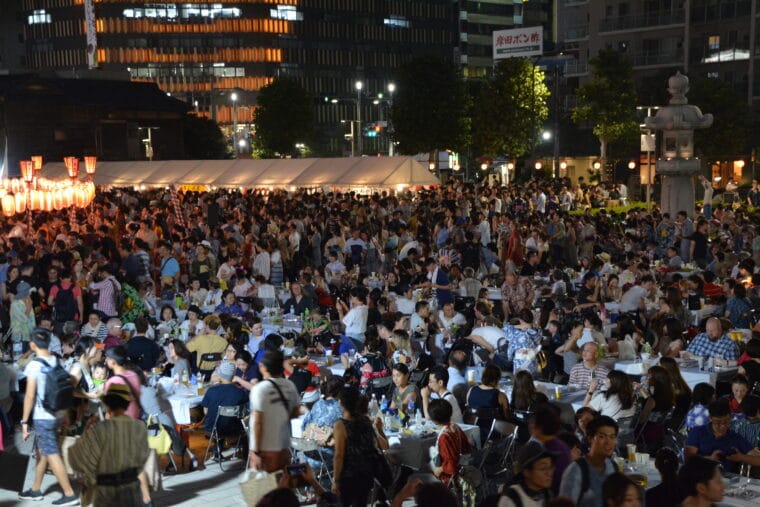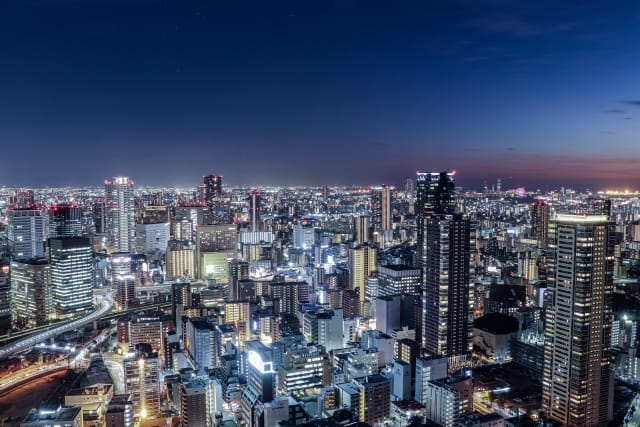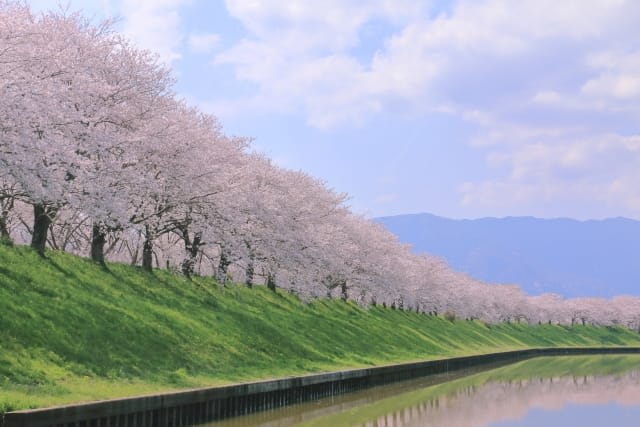8 Must-Visit Sacred Shrines Around Mt. Fuji
Mount Fuji, which can be considered one of Japan's most iconic symbols, is one of the country's premier tourist destinations where you can experience magnificent natural beauty, and I visit regularly myself. The surrounding area is home to numerous attractions, and simply touring around Mount Fuji allows you to enjoy various aspects of Japan.
However, due to Mount Fuji's enormous size, visiting all the tourist spots in the surrounding area takes quite a bit of time. In fact, a friend of mine visited Mount Fuji, but when returning home told me, "I didn't know which tourist destinations I should really visit, and I regretted not doing thorough research beforehand."
This shows that Mount Fuji can be a challenging destination for first-time foreign visitors to fully enjoy.
If you want to experience the Mount Fuji area efficiently and in-depth, I highly recommend having a knowledgeable local guide create the perfect itinerary and touring according to their plan. I actually participated in the "Mt. Fuji Full-day Day Trip Tour from Tokyo with a Private Car & Guide" myself and was amazed by both its convenience and rich content.
This tour is offered by Magical Trip, which won Tripadvisor's Best of the Best award consecutively in 2024 and 2025.

Thanks to our high-quality tours and the unique experience of enjoying tourist destinations like a local, Magical Trip's tours are consistently popular. For those who want to enjoy the Mount Fuji area efficiently and deeply, and for those who want to experience various parts of Japan like a local, I definitely recommend trying a Magical Trip tour.
Introduction
For us Japanese people, Mt. Fuji is more than just a mountain. As a sacred peak, it has drawn worship since ancient times and continues to captivate many people's hearts today.
While there are over 1,300 Mt. Fuji-related shrines scattered throughout Japan, it can be challenging for tourists to decide which ones to visit among so many options. Many locations have limited bus service or small parking lots, making access somewhat difficult.
However, these shrines possess charm that more than makes up for any inconvenience. The spectacular views of five-story pagodas with Mt. Fuji, sacred trees over 1,000 years old, pure spring water, and above all, the majestic shrine buildings that embody Japanese reverence for nature.
In this article, I'll introduce you to my specially recommended shrines from my more than 10 years of visiting Mt. Fuji. I'll share detailed information about the features, highlights, and access methods for various shrines, from famous tourist spots to lesser-known hidden gems. I hope this will help you plan your own unique "Mt. Fuji pilgrimage."
Table of Contents
・About Mt. Fuji and Shrines
・Why There Are Many Shrines in the Mt. Fuji Area
・8 Recommended Shrines in the Mt. Fuji Area
・Frequently Asked Questions About Mt. Fuji Shrines
About Mt. Fuji and Shrines
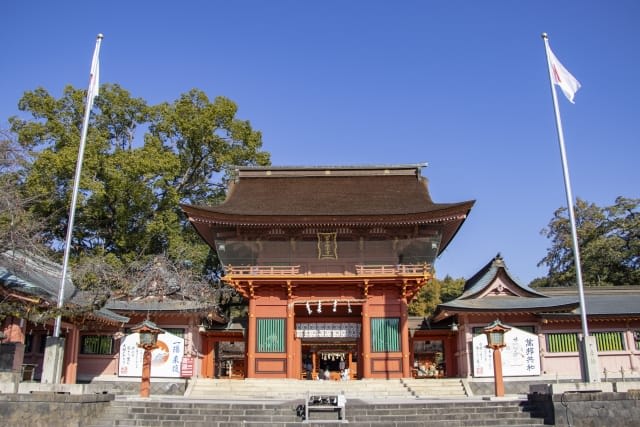
Let me first introduce you to some basic knowledge about the deep connection between Mt. Fuji and shrines.
Mt. Fuji's graceful form has captured people's hearts since ancient times and has been worshipped as a nature deity. Remarkably, there are about 1,300 Sengen shrines throughout the country that enshrine Mt. Fuji as a deity.
The main deity of these shrines is Konohanasakuya-hime, a beautiful goddess who appears in Japanese mythology and is known to have deep connections with Mt. Fuji. I still remember being deeply moved when I first learned about this deity and the profound Japanese respect and faith in nature.
In 2013, Mt. Fuji was finally registered as a World Cultural Heritage site. This recognition signifies not just its value as a mountain but its importance as a symbol of Japanese culture and faith. The fact that many shrines are registered as component assets demonstrates the high cultural value of Mt. Fuji worship.
Why There Are More Shrines Than Temples in the Mt. Fuji Area
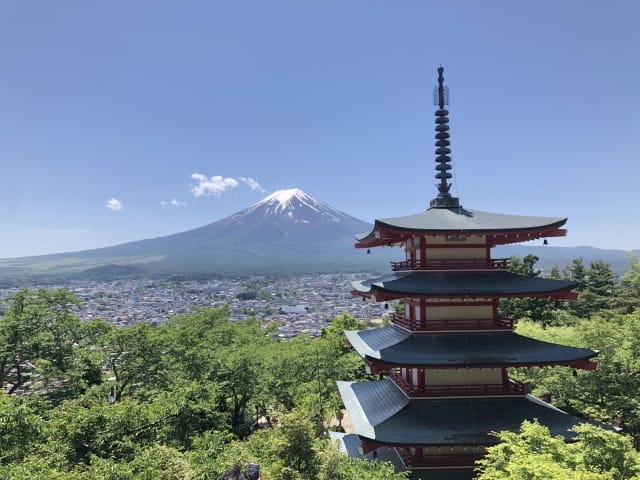
Let me explain an interesting fact about religious architecture in the Mt. Fuji area.
One characteristic you notice when walking around the Mt. Fuji area is that there are overwhelmingly more shrines than temples. This is not mere coincidence. Temples are Buddhist structures where deities brought from India are worshipped. On the other hand, shrines are Shinto structures where natural forces and deities are enshrined.
I find the harmony between Mt. Fuji and the Shinto worldview particularly impressive. In Shinto, nature itself - mountains, rivers, trees - is considered sacred.
Mt. Fuji, with its majestic appearance, has been viewed as a deity itself since ancient times and was an object of nature worship. Therefore, it had a stronger affinity with Shinto than Buddhism, naturally leading to the construction of many shrines.
How to Access the Mt. Fuji Area from Tokyo
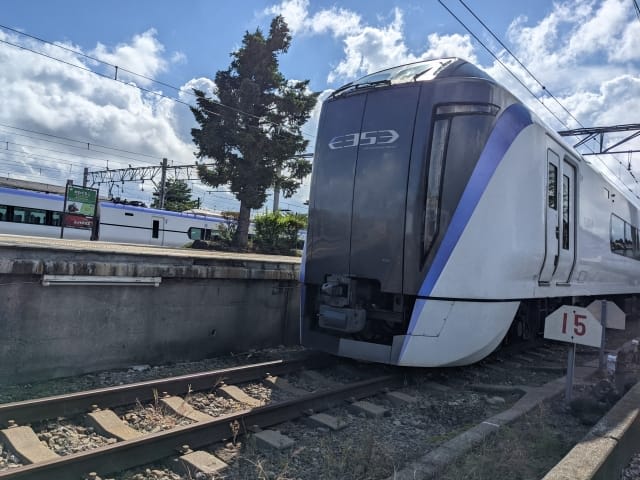
Let me introduce you to ways to access the Mt. Fuji area.
From Shinjuku, you can reach Lake Kawaguchiko in about 2 hours using the JR Limited Express "Fuji Meguri." The train journey itself becomes a wonderful memory as you view Mt. Fuji from the window.
Highway buses are also a convenient option. It takes about 2 hours from Shinjuku to Mt. Fuji Station and is relatively cheaper than the train.
For those who want to sightsee at their own pace, I recommend renting a car. Using the Tomei Expressway or Chuo Expressway, you can arrive from Tokyo in about 2 hours. The views of Mt. Fuji from rest areas along the way are spectacular.
For those short on time or wanting efficient sightseeing, I recommend using guided tours. I've used tours several times myself and found them comfortable as you don't need to worry about transportation or visit order.
8 Recommended Shrines in the Mt. Fuji Area
From the shrines that continue to convey ancient Mt. Fuji worship to the present day, I'll introduce 8 shrines that I've carefully selected through more than 10 years of visiting experience.
Must-See: Fujisan Hongu Sengen Taisha (Fujinomiya City, Shizuoka)

As the head shrine of over 1,300 Sengen shrines nationwide, Fujisan Hongu Sengen Taisha commands an overwhelming presence. I still vividly remember the solemn atmosphere when I first visited.
The shrine grounds, covering about 17,000m² just for the main sanctuary area, feature historically valuable shrine buildings constructed by Tokugawa Ieyasu.
I find the "Wakutama Pond," designated as a Special Natural Monument, particularly impressive. This pond, where Mt. Fuji's underground water springs forth, has high transparency and has been revered as a sacred place since ancient times.
This is definitely a must-visit spot among Mt. Fuji area shrines.
Website: http://fuji-hongu.or.jp/sengen/english/index.html
Access: About 10 minutes walk from JR Tokai Minobu Line Fujinomiya Station
Must-See: Arakura Fuji Sengen Shrine (Fujiyoshida City, Yamanashi)
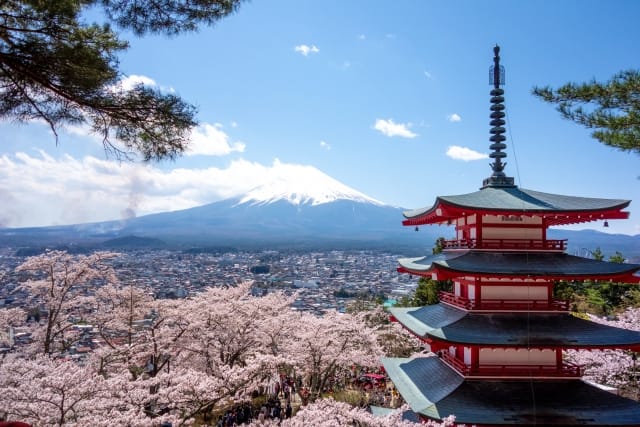
Arakura Fuji Sengen Shrine is considered "absolutely unmissable" among photographers. The reason lies in the beautiful composition that captures both the five-story pagoda and Mt. Fuji. I've visited more than 30 times, but I'm captivated every time by this scenery that shows different expressions depending on the season and time of day.
The spring scenery is particularly impressive. During cherry blossom season, you can encounter a spectacular view of the five-story pagoda, Mt. Fuji, and full-bloom cherry blossoms.
As a photography tip, I recommend visiting in the morning. Mt. Fuji backlit by the morning sun is breathtakingly beautiful.
Website: https://www.arakurafujisengen.com/
Access: 5 minutes walk from Fujikyu Line "Shimoyoshida Station"
Must-See: Kitaguchi Hongu Fuji Sengen Shrine (Fujiyoshida City, Yamanashi)
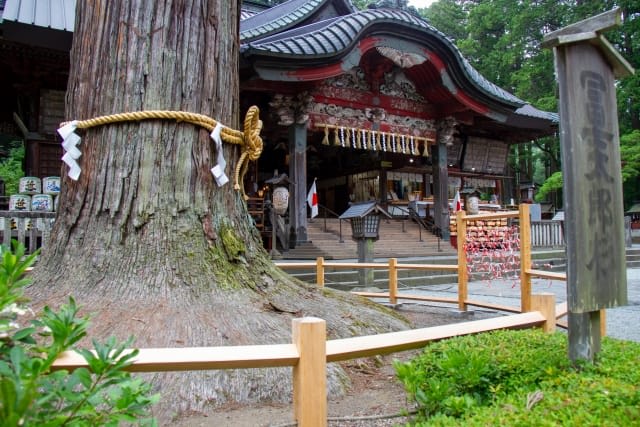
Located at the starting point of the Yoshida Trail to Mt. Fuji, Kitaguchi Hongu Fuji Sengen Shrine is a special place for praying for the safety of Mt. Fuji climbers.
What I find most impressive is the solemn approach path created by cedar trees over 1,000 years old. It creates a mystical atmosphere as if stepping into a divine realm.
The annual fire festival held in August is famous as this shrine's traditional event. You can feel the weight of history from the architectural styles of the main shrine, east shrine, and west shrine. It's particularly busy during the summer climbing season with worshippers praying for safety before their climb.
Website: https://sengenjinja.jp/english/index.html
Access: About 25 minutes walk from Mt. Fuji Station on the Fujiyama Electric Railway Fujikyu Line
Must-See: Kawaguchi Asama Shrine (Fujikawaguchiko Town, Yamanashi)
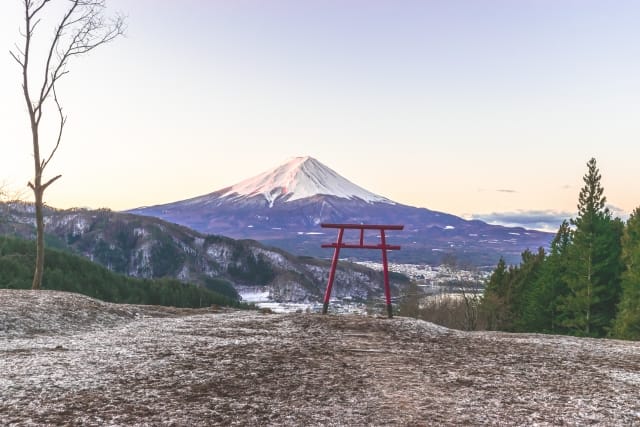
The main highlight of Kawaguchi Asama Shrine is undoubtedly the Seven Cedar Trees, which are 1,200 years old. When I first saw these giant trees, I was speechless at their overwhelming presence. Their branches and leaves, which have grown high into the sky over many years, are full of dignity as if protecting Mt. Fuji.
The view of Mt. Fuji from the shrine grounds is particularly beautiful, and its location near the lakeshore makes it an excellent photo spot.
Nearby is a power spot called "Mother's White Waterfall," where you can enjoy a walk while feeling negative ions. Since it's easy to visit during sightseeing, I definitely recommend stopping by when visiting Lake Kawaguchi.
Website: https://asamajinja.or.jp/
Access: From Kawaguchiko Station, take a bus (bound for Kofu or Oishi Petit Pension Village) and get off at "Kawaguchi Post Office" bus stop (immediately north after getting off)
Hidden Gem: Murayama Sengen Shrine (Fujinomiya City, Shizuoka)
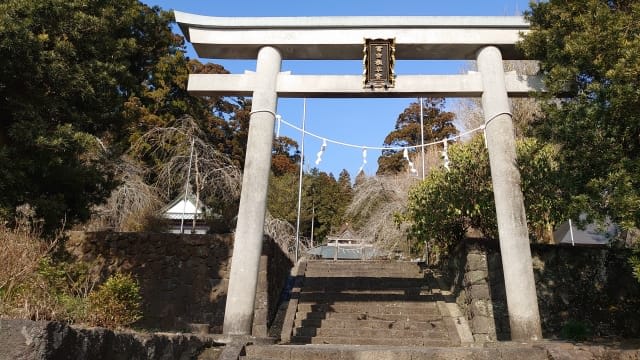
Murayama Sengen Shrine, once the center of Mt. Fuji ascetic practices, is now a hidden gem with a quiet charm.
The sacred tree, estimated to be 1,000 years old, radiates a divine presence after many years. While access is only by car and inconvenient, this means you can enjoy worship quietly, away from tourist crowds.
Website: http://shizuoka-jinjacho.or.jp/shokai/jinja.php?id=4404199
Access: About 20 minutes by car from JR Fujinomiya Station
Hidden Gem: Suyama Sengen Shrine (Susono City, Shizuoka)
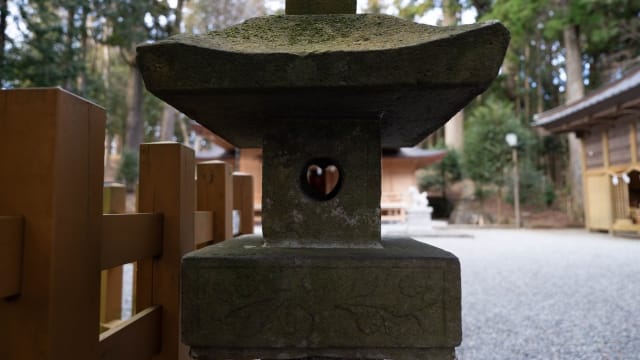
Suyama Sengen Shrine, located at the starting point of the Suyama Trail, is a hidden gem of Mt. Fuji known to few. What I find most attractive is the mystical atmosphere created by the cedar trees over 400 years old. As you walk along the approach path, you're enveloped in a strange sensation of leaving everyday life behind.
There's a unique stone lantern with a heart-shaped window in the grounds, which is popular as a photo spot.
While worship is free at any time, the shrine office is only open on weekends, and access is inconvenient. However, this means you can worship in a peaceful atmosphere.
Website: http://www.shizuoka-jinjacho.or.jp/shokai/jinja.php?id=4403099
Access 1: From JR Tokaido Main Line Mishima Station, take a bus (bound for Suyama, Grinpa, or Yeti) for about 50 minutes, get off at Suyama bus stop, 10 minutes walk
Access 2: From JR Gotemba Line Susono Station, take a bus (bound for Suyama, Grinpa, or Yeti) for about 35 minutes, get off at Suyama bus stop, 10 minutes walk
Hidden Gem: Higashiguchi Hongu Fuji Sengen Shrine (Oyama Town, Shizuoka)
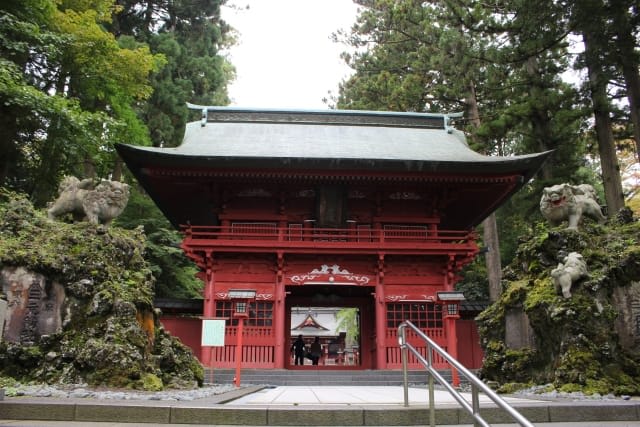
Higashiguchi Hongu Fuji Sengen Shrine, the starting point of the Subashiri Trail, is notable for its large vermillion gate.
When I first visited, I was captivated by the vivid contrast between the vermillion color and the surrounding trees. The grounds contain many noteworthy trees, including ancient elm trees and uniquely shaped exposed-root fir trees.
Many wild birds inhabit the quiet grounds, and if you visit early in the morning, you can enjoy worship while listening to birdsong.
While it's only accessible by bus, it's right at the bus stop, making it one of my favorite hidden spots.
Website: https://higashiguchi-fujisengenjinja.or.jp/
Access: From JR Gotemba Station, take Fujikyu Bus bound for "Subashiri/Fuji Gakko" or "Kawaguchiko" - Get off at "Subashiri Sengen Shrine Mae" stop
Hidden Gem: Yamamiya Sengen Shrine (Fujinomiya City, Shizuoka)
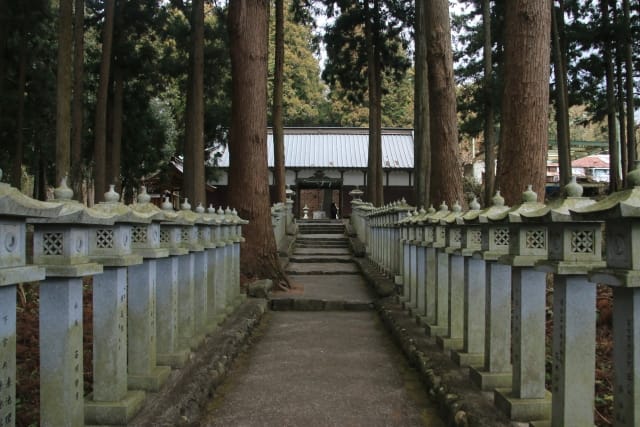
Yamamiya Sengen Shrine, said to be the oldest among Sengen shrines, has the extremely rare characteristic of not having a main shrine building.
What I find most impressive is the presence of a worship hall where Mt. Fuji is directly revered. Here, you can experience the ancient form of faith where nature itself is worshipped as a deity, without the intermediary of buildings.
The grounds, surrounded by cedar trees hundreds of years old, are filled with a solemn atmosphere. Particularly, the stone-paved approach path has a profound atmosphere, and I feel a sense of purification with each step. While access is indeed inconvenient, this means you can worship quietly in an environment with few tourists.
Website: Unavailable
Access 1: About 15 minutes by car from JR Minobu Line Fujinomiya Station
Access 2: From JR Minobu Line Fujinomiya Station bus stop (platform 4, Awakura Manno Line), take the bus to Manno Danchi Entrance bus stop. Then about 30 minutes walk to Yamamiya Sengen Shrine
Frequently Asked Questions About Mt. Fuji Shrines
Let me share insights from my over 10 years of visiting experience to help make your Mt. Fuji shrine pilgrimage more enjoyable and fulfilling.
How Long Does It Take to Visit Mt. Fuji Shrines?
I recommend taking your time when visiting shrines around Mt. Fuji. Many shrines are only accessible by bus or car, and you need time to fully appreciate their true charm.
It takes 2-3 days to visit all the famous shrines. From my experience, visiting 2-3 shrines per day is ideal. This allows enough time to fully enjoy worship, photography, and exploring the grounds at each shrine.
What's the Best Season to Visit Mt. Fuji Shrines?
Mt. Fuji shrines show different charms in each season. I find late March to early April particularly wonderful during cherry blossom season. You can enjoy Japan's symbols all at once - the five-story pagoda, shrine buildings, cherry blossoms, and Mt. Fuji.
The fresh greenery season of May-June has a divine beauty. The shrine grounds are covered in young leaves with refreshing air. October-November's autumn colors are also spectacular, with cedar-lined shrine approaches taking on a mystical atmosphere.
The New Year's visit season in January is busy with many worshippers but offers a special experience of offering prayers in a solemn atmosphere.
Personally, I also love the winter months of December-February. There are many clear days when you can view Mt. Fuji in crisp air.
Which Shrines Have Good Access?
For those considering public transportation, I recommend the "Must-See" shrines introduced earlier:
Fujisan Hongu Sengen Taisha is extremely convenient at 10 minutes walk from Fujinomiya Station. Arakura Fuji Sengen Shrine is 15 minutes walk from Shimoyoshida Station. Kawaguchi Sengen Shrine is 15 minutes by bus from Kawaguchiko Station, and Kitaguchi Hongu Fuji Sengen Shrine is 25 minutes walk from Mt. Fuji Station.
What Should I Know About Shrine Etiquette?
As shrines are places of worship, it's important to follow proper etiquette. First, bow before passing through the torii gate. This is courtesy when entering sacred ground. Next, practice purification at the chozuya (water basin). Take water with your left hand first, then right hand, and rinse your mouth for purification.
The basic worship at the main shrine follows "two bows, two claps, one bow." First bow twice, then clap twice, and finally make one deep bow. Remember to be quiet during worship and avoid disturbing other visitors.
Visiting shrines around Mt. Fuji is a valuable experience to deeply understand Japanese nature worship and culture. Enjoy the unique charm of each shrine, from famous tourist spots to quiet hidden gems. Shrines show different expressions depending on the season and time of day, offering new discoveries with each visit.
Finally, here's my advice: visiting Mt. Fuji shrines is not just sightseeing but a journey to connect with ancient Japanese hearts and faith. Please take your time to feel the unique atmosphere of each shrine!
